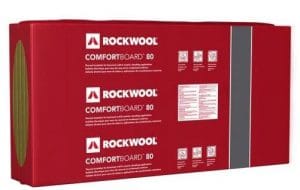Drums produce a lot of sounds, and sometimes the space doesn’t have enough acoustic treatment. There are some things you can do on how to reduce reflection on drum shield , which will improve the quality of the sound. Here are 6 simples tips that you can do to reduce reflection on your drum shield.
Keep It Far Away From Walls And Corners
If you have ample space for your practice, then this shouldn’t be a problem. But if there is no space in your room to keep it away from any wall or corner, then use some acoustic foam boards that can reduce the reflection of sound waves off hard surfaces.
You can also hang them above the drum set with minimal contact on the drums, so they don’t absorb too much low end. If you want to go all out, consider building an isolation booth around your drum kit. Just make sure not to block air vents behind those panels because ventilation is crucial when dealing with microphones and amps.
It would be best if you always tried keeping the speakers at least one foot away from any surface. If you are in a room with bare walls, corners, and hard floors or ceilings (tile), you must use bass traps behind the speakers to reduce the reflection of sound waves bouncing off surfaces.
Use A Thick Drum Shield
If you have a thick drum shield, it will help absorb some of the sound waves that bounce off surfaces back onto your drums. It doesn’t take much to make a difference since there is already so much reflection in small rooms.
For example, I used MDF for my drum shields but switched them out with thicker acrylic and noticed an immediate improvement.
If you are using thinner materials like plexiglass or polycarbonate instead of glass or acrylic, consider placing another sheet behind the one without any reflective surface (Plexi vs. metal).
I recommend acrylic because they’re easily shatterproof and look great as well. They also cost less than glass which makes them an even better option for home studios.
Use A drum Shield With Sound Absorbent Material Inside
One of the most popular materials for this is acoustic foam. You can attach it to your existing drum shields or build custom panels out of them and put in behind your drums.
These will help reduce reflection by absorbing high-end waves coming from every surface around you. They’re also relatively cheap, so you don’t have to worry about spending too much on these things unless you want something very durable like Acrylic, which costs more but reduces reflections even better than Acoustic Foam does.
I recommend using acoustic foam sheets because they are easy to install/remove when needed and not as heavy as other materials such as Rockwool insulation boards.
At some point, you’re going to need acoustic foam if your drums are in a small room. It’s something that every studio should have lying around. All it takes is one sheet of this stuff on the wall behind you, or even just hanging above your kit, and BOOM… you’ll notice an immediate difference.
Just make sure not to get too close with your mics because they will pick up all those reflections absorbed by the foam, which can create phasing issues when recorded. So try placing them at least one foot away from any reflective surfaces like floor tiles, for example 🙂
[Related Article: How To Make A Drum Shield DIY With 9 Simple Steps]
Use Soundproofing Material On The Back
If you want to completely seal off your drums from any outside noise as well as reflections, then consider getting something like a Rockwool insulation board for this. You can attach it to your existing shield and build custom panels out of them.
Be sure that whatever material you choose does not have metal because those will affect how microphones pick up sounds and create unwanted tonal coloration (read: horrible sound).
For example, if two mics are placed at the same distance from a snare drum but one has foam behind it while the other doesn’t…the mic without anything between itself and the cymbals will develop much more low-end overtones than its counterpart, which is an awful thing when recording.
Use Soundproofing Material On The Side
You can attach a Rockwool insulation board to your existing shields or build custom panels out of them and place one next to each speaker/side you want to be protected.
If using acoustic foam, I recommend setting it as close as possible so that reflection is reduced as much as possible (the closer, the better.).
Some people may disagree with me about this because they claim that reflected waves affect tonal quality since they bounce off surfaces behind drums and into microphone capsules which shouldn’t be an issue if we’re talking about small home studios where there’s no real need for thick Acoustic Foam unless you care how things sound.
This approach works just fine but keeps in mind that low-end waves affect tonal coloration (read: horrible sound), so only use foam if you don’t care about how drums sound.
As with most things in life, there are tradeoffs to everything. You can choose thicker material like Acoustic Foam which will reduce reflections more than thinner materials…or you can go entirely without any reflective surface behind your drum shield and instead keep it as close as possible to the front of your kit since that’s where all those nasty waves come from anyways 🙂
It boils down to personal preference on this one, but I think that using thick acoustic foam is best for home studios because they’re easily shatterproof and look great too. They also cost less than glass or acrylic, making them an even better option for anyone on a budget.
[Related Article: Drum Tuning For Complete Beginners(Various Drum Types)]
Use Soundproofing Material On The Top
This is probably the most crucial part to cover because if you don’t do this, your drums will be fully exposed to whatever happens in front of them.
If you’re protecting just one side, then I recommend doing that one first and seeing how it sounds before continuing any further but for complete coverage of all sides at once. It’s best to use a Rockwool insulation board, or acoustic foam sheets cut into smaller pieces so they can be attached around corners without too much trouble.
It should go without saying that using thick Acoustic Foam works well here since it reduces reflections more than thinner materials like Rockwool boards which are better suited for reducing the noise coming from outside.
If you have to use Rockwool insulation boards, then cut them to fit around corners without much trouble. You can also attach them directly to the front of your drum shield if it has no soundproofing material on top already 😉





